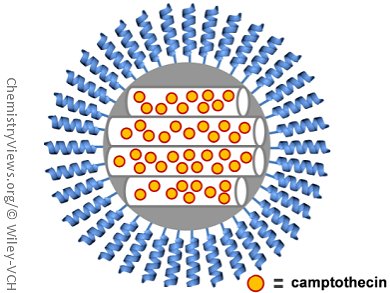Gated mesoporous silica nanoparticles are a popular platform for stimulus-induced drug delivery owing to their well-defined porous structure. Many different stimuli have been investigated, including changes in pH or temperature, irradiation with light, and, more recently, interactions with biomolecules.
Ramón Martínez-Máñez and colleagues, Universidad de Valencia, Spain, have developed a way to induce release from mesoporous silica nanoparticles (pictured) with enzymes. ε-Poly-L-lysine, containing 25–35 L-lysine amino acid units linked by ε-amino groups, was attached to the surfaces of the nanoparticles through both specific and nonspecific routes. In the presence of proteases, hydrolysis of the amide bonds occurred, resulting in the release of the cargo, with different delivery profiles that depended on the attachment method.
This strategy was used to deliver cargo to HeLa cells, the most commonly used human cell line. First, a Ru-based dye was loaded to study the distribution of the cargo. After incubation for 48 hours, fluorescence was observed mainly in the lysosomes. HeLa cells were then treated with nanoparticles loaded with the chemotherapeutic agent camptothecin, and dose-dependent cell death occurred.
- Enzyme-Responsive Intracellular-Controlled Release using Silica Mesoporous Nanoparticles Capped with ε-Poly-L-lysine ,
Laura Mondragón, Núria Mas, Vicente Ferragud, Cristina de la Torre, Alessandro Agostini, Ramón Martínez-Máñez, Félix Sancenón, Pedro Amorós, Enrique Pérez-Payá, Mar Orzáez,
Chem. Eur. J. 2014.
DOI: 10.1002/chem.201400148




